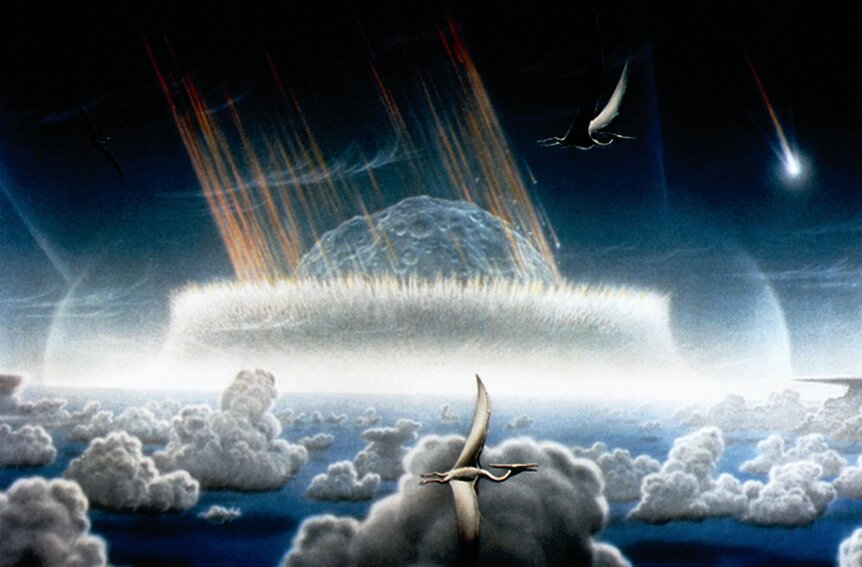Create a free profile to get unlimited access to exclusive videos, sweepstakes, and more!
New study believes dinosaurs were being poisoned before epic asteroid strike

Let's face it, dinosaurs enjoyed their rule of the roost on Earth for an epic length of time and were, as Jurassic Park's Dr. Ian Malcolm asserts so vehemently, selected for extinction by nature.
Wherever the debate on the exact cause of their eventual demise leads, it's often apparent to scientists that there were a number of contributing factors that played into their removal from our planet's ecosystem, most notably a ginormous asteroid 66 million years ago that left the Chicxulub Crater in Mexico's Yucatan Peninsula at the end of the Cretaceous Period.
Now, a new University of Michigan-led study presented to the online journal Nature Publications poses that thousands of years before the asteroid plowed into our Big Blue Marble, dinosaur health had been in grave danger due to a sudden increase in mercury levels caused by the mass eruptions of the Deccan Traps in India.
Investigating fossilized marine mollusk shells collected from across the globe, scientists were surprised to discover “what appears to be a global signal of both abrupt ocean warming and distinctly elevated mercury concentrations” caused by the million-year-long volcanic explosions. This devastating geologic event remains one of the prime factors in the creation of the majority of Western India.
“For the first time, we can provide insights into the distinct climatic and environmental impacts of Deccan Traps volcanism by analyzing a single material,” researcher Kyle Meyer, lead author of the study, explained in a statement.
“It was incredibly surprising to see that the exact same samples where marine temperatures showed an abrupt warming signal also exhibited the highest mercury concentrations and that these concentrations were of similar magnitude to a site of significant modern industrial mercury contamination.”
The significant levels of mercury, a highly toxic metal, found within these ancient shells was similar to the contaminated freshwater clamshells researchers gathered from Virginia’s South River site in the Shenandoah Valley, which has a restricted fishing ban imposed due to dangerous mercury levels caused by industrial pollution.
“Mercury anomalies had been documented in sediments but never before in shells,” co-author Sierra Petersen noted. “Having the ability to reconstruct both climate and a volcanism indicator in the exact same materials helps us circumvent lots of problems related to relative dating. So, one of the big firsts in this study is the technical proof of concept.”
While Earth's changing climate due to the Yucatan's asteroid impact no doubt played a predominant role in these giant creatures being wiped off the Earth, it's only a small piece of a complex puzzle paleontologists, geologists, and climatologists are still trying to fit together.
Theorizing that naturally occurring mercury caused by the incredible Indian eruptions acted as a harmful influence in the dinosaurs' lives, this new study recognizes much more about the timing and scope of the Deccan Traps eruptions to bolster the idea that mercury poisoning was already affecting these giant beasts long before the monster rock fell from the sky.





























